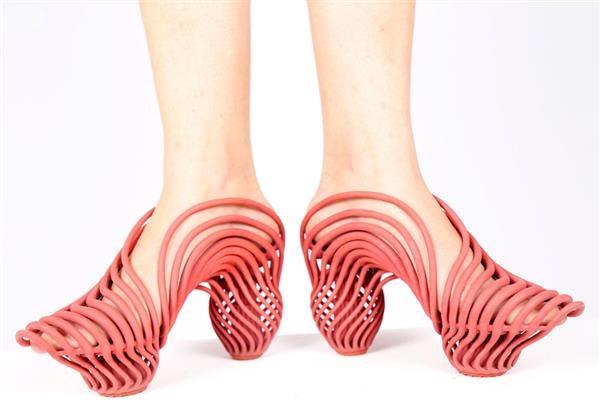Published on the 09/03/2016 | Written by Beverley Head

The fashion industry has already been disrupted by online commerce – the advent of 3D printers, wearable technology and mass customisation will make that seem like child’s play…
With Melbourne fashion week currently at full clip, the local industry has been getting a taste of the fashion future – and on Friday will hear from Shoes of Prey co-founder Jodie Fox about how the internet has revolutionised fashion by allowing 5 million people to design their own bespoke shoes using that platform.
Three dimensional printing and computing is also changing the way designers work. On the weekend Melbourne designer Nixi Killick, who counts Lady Gaga among her clients, will unveil a collection which has been designed entirely on the 3D optimised HP Sprout.
Sprout lets people capture a 3D image by scanning it, work with that image on the computer, and then create a 3D print of a final design.
At Microsoft’s 2015 Imagine Cup last year, a team from Brazil called eFitFashion, won with an online marketplace that allows people to use preloaded patterns to create bespoke clothes one at a time. Besides encouraging personal creativity – the approach caters for people with physical disabilities who might find it hard to buy off-the-peg.
The advent of 3D fabric printers, which are currently in development will take fashion innovation to the next level.
It should not then come as any surprise that the theme for this year’s Costume exhibition at the Metropolitan Museum of Art in New York is “Manus x Machina: Fashion in an Age of Technology” with Apple’s chief design officer Jonathon Ive as one of the co-chairs of the event.
Boston’s Museum of Fine Arts meanwhile this week opened a four month exhibition called #techstyle which explores the impact of technology on fashion and designers, and features a 3D printed dress from Alexander McQueen.
Bob McKee, fashion and retail industry global strategy director for enterprise software house Infor, is currently visiting Australia. He says that the entire value chain of the fashion industry is being disrupted as organisations harness technology and leverage consumer data to design new products and services.
He warned though that while fashion businesses were leveraging insights from social media, to be successful then they had to “be prepared to respond really quickly,” to merging consumer trends and preferences.
Those that did were now constructing radically changed business models. He offered the example of a Hong Kong based shirtmaker that once used to have a minimum order of 5,000 dozen shirts. Modern technology meant the company was now able to accept orders one at a time in a “giant made to measure” business.
But he said that mass customisation had only just begun, and the advent of technologies such as personal avatars, and the ability to create 3D bodyscans for the creation of bespoke garments would further challenge conventional fashion companies.



























